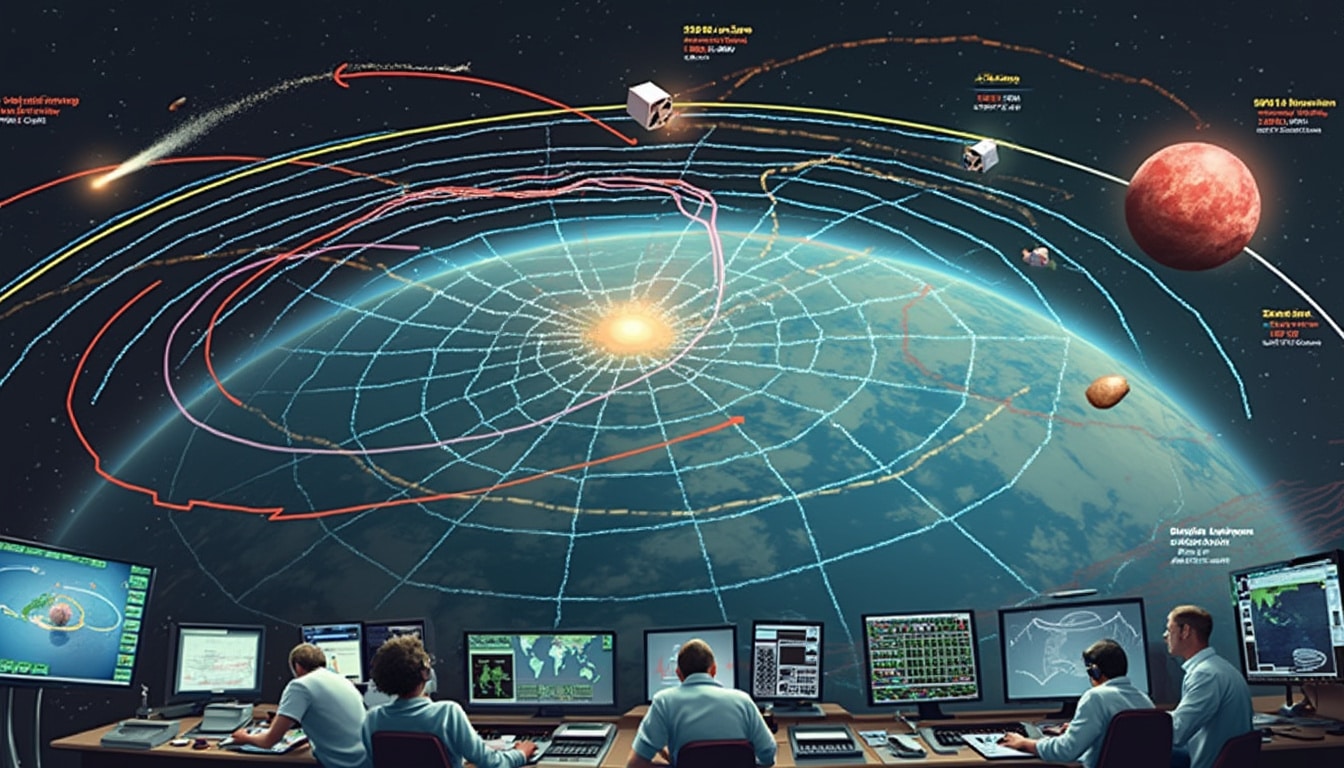The launch of the NEO Surveyor mission marks a significant advancement in humanity’s quest to monitor the vastness of space and safeguard Earth against potential asteroid threats. NASA’s decision to collaborate with SpaceX reflects not only the reliability of commercial space services but also the urgency to track and study near-Earth objects (NEOs). Set for a tentative launch in September 2027, this mission utilizes cutting-edge technology designed to detect and characterize asteroids and comets that venture into our cosmic backyard.
This state-of-the-art space telescope will operate from the Earth-sun L-1 Lagrange point — a location ideal for uninterrupted observation. By employing infrared detectors, NEO Surveyor seeks to identify many NEOs and estimate their sizes, contributing critical data for planetary defense strategies.
A Look Inside the NEO Surveyor Mission
The NEO Surveyor spacecraft stands out with its dedicated 50-centimeter telescope designed to peer deep into space, effectively identifying celestial bodies that could potentially threaten our planet. The goals of this mission are ambitious: to detect a significant percentage of NEOs measuring at least 140 meters in diameter over the next decade.
This mission’s inception is fueled by the increasing visibility of asteroids within our solar system, amplifying the need for vigilant monitoring. Events like the close approach of asteroid 2024 YR4, initially projected to have a slight chance of colliding with Earth, underscore the responsibilities tied to cosmic awareness. NASA aims to reduce such risks significantly, with the NEO Surveyor mission leading the charge.
The Science Behind the Telescope
Equipped with advanced infrared detectors, the NEO Surveyor telescope will greatly enhance our ability to observe and categorize NEOs. Traditional optical telescopes often struggle to detect dark objects that reflect minimal light; however, infrared technology allows for the identification of these elusive bodies based on heat signatures.
The telescope’s primary mission involves measuring orbits and classifying asteroid sizes, crucial steps for planetary defense initiatives. By using this data, scientists can better predict future paths of asteroids and determine if any pose a significant threat to Earth.
The Significance of Monitoring Near-Earth Objects
The significance of tracking near-Earth objects cannot be overstated. As more asteroids are detected, understanding their trajectories and potential impacts becomes a shared responsibility among the global scientific community. The 2024 YR4 asteroid incident has shown just how vital advanced monitoring systems can be.
NASA’s budget for the NEO Surveyor mission reflects both the fiscal and scientific priorities of the agency. The projected cost, estimated at around $100 million, is a small price to pay for the safety and security of our planet in the face of potential celestial hazards. Ongoing research will help refine predictions and develop countermeasures against possible impacts.

The Role of Commercial Space Enterprises
Navigating the future of space exploration increasingly involves partnerships with commercial enterprises. SpaceX’s role in launching the NEO Surveyor mission demonstrates the efficacy of these collaborations. Engaging with commercial partners not only optimizes costs but accelerates the timeline of these pivotal missions.
SpaceX’s accomplishments in providing reliable launch services have positioned it as a leader in the space sector. The synergy of NASA’s expertise and SpaceX’s technological advancements is a promising combination for the success of the NEO Surveyor mission and our broader endeavors in planetary defense.
Data Collection and Future Implications
Data gathered by the NEO Surveyor will offer unprecedented insights into the characteristics of near-Earth objects. Understanding these objects is pivotal for developing strategies to mitigate impact threats. The data collected will also have broader applications in understanding the history of our solar system and the processes driving it.
Research efforts will hinge on the information retrieved from this mission, shaping future planetary defense policies and informing the public on asteroid risks. Scientifically driven initiatives will seek to enhance community awareness regarding the potential dangers from space.

Potential Challenges Ahead
Despite the optimistic outlook, challenges remain on the path to successfully executing the NEO Surveyor mission. Given the complexities surrounding space navigation and data analysis, NASA must navigate unforeseen circumstances as the project progresses. Factors such as mechanical failures or data inaccuracies could hinder mission objectives.
Ensuring reliable operation is paramount, especially considering the potential hazards presented by NEOs. Rigorous testing and simulation will precede the launch to ascertain mission safety and reliability, placing stringent criteria on every spacecraft component.
Preparing for Launch
As the months lead up to the launch of NEO Surveyor, an extensive assembly and testing period will unfold. Each section of the spacecraft will undergo thorough evaluation before final integration. NASA’s commitment to meticulous planning and execution will ensure the mission’s success.
The forthcoming launch represents a leap forward in planetary defense and the capability to spot hazardous space objects. Humanity’s survival may increasingly depend on technologies like NEO Surveyor as we strive to understand and defend against potential threats from space.

Staying Informed and Engaged
Staying informed about missions like NEO Surveyor encourages public engagement with space exploration and inspires future generations of scientists and astronomers. It’s essential to harness the interest around planetary defense and collaborate on broader initiatives aimed at safeguarding Earth.
Organizations, educational institutions, and communities must come together to raise awareness about the importance of monitoring near-Earth objects. By sharing knowledge and resources, we can proactively tackle challenges posed by asteroids and bolster our planetary defense strategies.




Leave a Reply